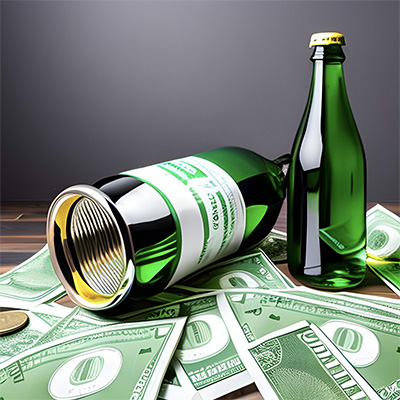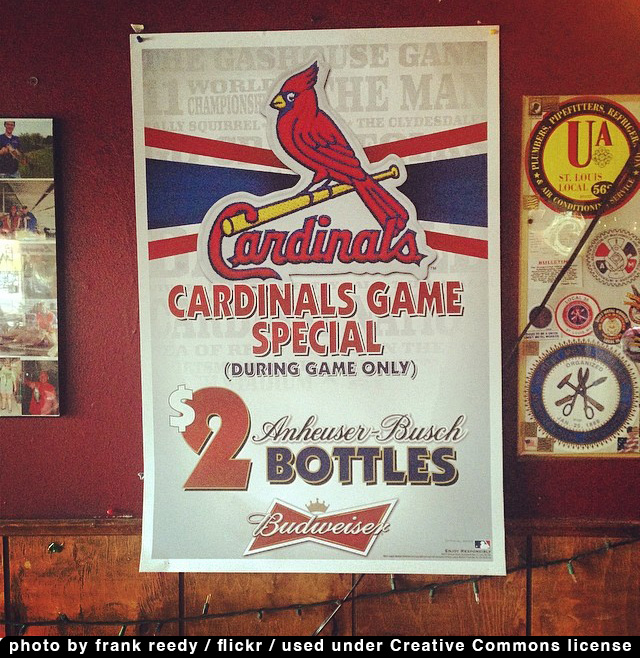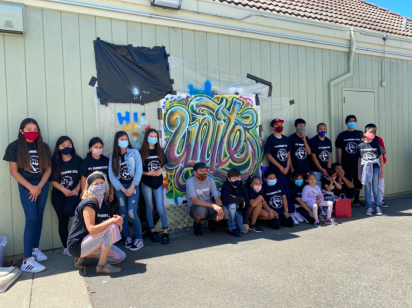Blog
CA's Decaying Alcohol Tax Meets Its Budgetary Hole
 What do we do when the money runs dry, and nothing else does?
What do we do when the money runs dry, and nothing else does?
California currently faces this question, torn between two stark realities: on the one hand, a crushing 22.5 billion dollar debt; on the other hand, a dizzying 75% increase in alcohol-related deaths since 2015. The answer is simple (though putting it into practice less so): raise the alcohol excise taxes in the state.
Calling for a Last Call: MLB Pitcher Warns of Reckless Beer Sales
 There are times when we might look at our situation and despair. For instance, despite a pennant run and an investment in continuing to develop an elite baseball team, you begin the season ravaged by injuries, particularly to your starting pitching. Or, to use a completely different example, you have long advocated against the corrosive effects of alcohol money in public events, including organized sports, only to find a public reluctant to listen.
There are times when we might look at our situation and despair. For instance, despite a pennant run and an investment in continuing to develop an elite baseball team, you begin the season ravaged by injuries, particularly to your starting pitching. Or, to use a completely different example, you have long advocated against the corrosive effects of alcohol money in public events, including organized sports, only to find a public reluctant to listen.Oddly enough, in both instances, the answer seems to be Matt Strahm.
Strahm is a 31 year-old journeyman starter for the Philadelphia Phillies. He is a month into what may be a breakout season, converting from the bullpen to emergency starter with staggering success and posting a 2.31 ERA (so far) with over 12 strikeouts per 9 innings. And in a rare moment of ballplayer candor, he blasted the emerging consenus among Major League Baseball (MLB) owners that alcohol sales must be extended beyond the 7th inning.
Most MLB teams stop alcohol sales after the seventh inning stretch. The given rationale is that this gives patrons a few innings to sober up before driving home, a major concern based on data showing that a significant number of fans given an alcohol test at an MLB game were over the legal limit yet intended to drive home, including 1 in 5 men between 20 and 35. Further research, conducted conicdentally at Citizen's Bank ballpark in Philadelphia, suggests that giving fans longer to sober up also has significant effects on incidents of violence and assault.
Yet baseball has also been working to shorten the games. With shorter games come fewer opportunities to purchase concessions, including alcohol. Not only is alcohol a high-margin product for team ownership, but alcohol companies have considerable leverage themselves, spending hundreds of millions of dollars in advertising at stadiums and during broadcasts. Under sway of this leverage, several teams in the league have already buckled under and decided to extend beer sales past the traditional cutoff.
Speaking to the "Baseball Isn't Boring" podcast, Strahm was quick to identify the recklessness in the idea. "So now with a faster-pace game--and me just being a man of common sense--if the game is going to finish quicker, would we not move the beer sales back to the sixth inning to give our fans time to sober up and drive home? Instead, we're going to the eighth, and now you're putting our fans and our family at risk driving home with people who have just drank beers 22 minutes ago."
Strahm lay the blame firmly on the intertwining of shortsightedness and greed. "When you mess with billionaires' dollars, [they] find a way to make their dollars back," he said. "My thing is, when you're looking at the safety of your fans, that's probably not the smartest decision."
Strahm did not make it clear whether he knew of or supported the campaign to Free Our Sports, the campaign intended to remove Big Alcohol's stranglehold on athletics in the United States. But he did follow up his comments by throwing 5 and a third shutout innings against Seattle. And now that he has the public's attention, perhaps it's time to make that demand again, and louder: do not let Big Alcohol kill or fans, friends, and family. Do not trust voluntary alcohol sales restrictions that lift at the first whiff of a thinner wallet. Listen to Matt Strahm and Free Our Sports.
READ MORE about the campaign to Free Our Sports.
Bud Drops Back, But Super Bowl Offers No Safety
The field for the NFL title game was dry, yet surprisingly slick in a way that threatened injury.
 And so was Heineken.
And so was Heineken.
The international beer giant ran an ad for Heineken 0.0, a non-alcoholic version of their signature green-bottled brew. That in itself was unsurprising. The rising popularity of Dry January, the growing recognition of the accumulative harms of drinking day in and day out and the surge of nonalcoholic bars and cocktails has sent a message that Heineken has received—and its rivals may be slow to accept.
Or perhaps not. Anheuser-Busch, the American face of megaproducer AB InBev, relinquished its exclusive beer sponsorship of the Super Bowl for the first time in 30 years. This backing down from the primacy of a beer-and-football Sunday may suggest the brewer is keeping a lower profile and recuperating from the PR nightmare arising from its soccer World Cup sponsorship.
Youth For Justice Has a Million Reasons to Stay in the Fight
 Alcohol Justice’s Youth For Justice (YFJ) program has always strived to plant seeds of positive change in San Rafael’s Canal District. As the recipients of a new million-dollar grant, YFJ can run its roots deep, providing expansive programming for the youth of the community for years to come.
Alcohol Justice’s Youth For Justice (YFJ) program has always strived to plant seeds of positive change in San Rafael’s Canal District. As the recipients of a new million-dollar grant, YFJ can run its roots deep, providing expansive programming for the youth of the community for years to come.
The funding comes from Elevate Youth, a grantmaking project under the Sierra Foundation, which disburses prevention funds from California’s cannabis taxes. The money is dedicated to promoting youth leadership programs in the communities hardest hit by the war on drugs, notably low-income BIPOC communities. The Canal—where Alcohol Justice is located—is one of these districts, with 73% of residents identifying as Hispanic, and a median household income of $40,000 per year—only 40% that of San Rafael as a whole.
The funds go to support YFJ’s unceasing efforts to provide prevention education, community space, and leadership opportunities for the Canal’s youth. The program is based on a “Four-Pillar” model, developed by YFJ director Maite Durán. The pillars comprise Health and Healing, Nature Connection, Culture and History of Latino/Indigenous Peoples, and Community Organizing to Prevent Alcohol and Other Drug Harm.
 The ongoing programming includes exploring emotions and identity through art, cooking, gardening, and engagement with the natural environment of Marin, as well as mingas. Derived from an indigenous Kichwa word for a day of collective volunteer work, the mingas gather the YFJ staff and participants together to engage in community cleanups and beautifications. By removing trash, and particularly drug- and alcohol-related litter, the kids both develop pride in their neighborhood and reduce the normalization of substance use.
The ongoing programming includes exploring emotions and identity through art, cooking, gardening, and engagement with the natural environment of Marin, as well as mingas. Derived from an indigenous Kichwa word for a day of collective volunteer work, the mingas gather the YFJ staff and participants together to engage in community cleanups and beautifications. By removing trash, and particularly drug- and alcohol-related litter, the kids both develop pride in their neighborhood and reduce the normalization of substance use.
This positive energy can be used for more aggressive change as well. On multiple occasions, the kids who make up YFJ have organized to push back against harmful alcohol industry practices. The kids have assessed the sales environment of alcohol licensees in San Rafael, picketed stores that sell the most harmful products, and persuaded liquor stores in the community to agree to make the Canal an “alcopop-free zone.”
Alcohol Justice was one of 61 community and tribal organizations to receive funding from Sierra. The grant runs for the next three years.
READ MORE about youth-friendly stores in San Rafael.
READ MORE about the kids of YFJ taking to the streets.
More Articles ...
Help us hold Big Alcohol accountable for the harm its products cause.
| GET ACTION ALERTS AND eNEWS |
STAY CONNECTED    |
CONTACT US 24 Belvedere St. San Rafael, CA 94901 415-456-5692 |
SUPPORT US Terms of Service & Privacy Policy |


